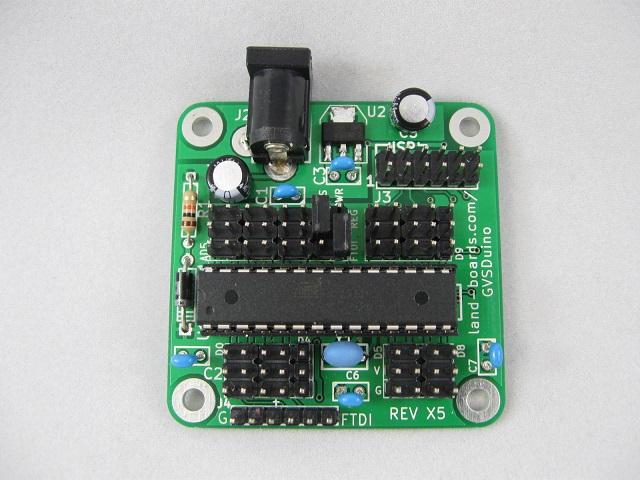GVSDuino
Features
We love the Arduino but have always found several aspects of deploying Arduinos into real-world applications to be particularly troubling. Our frustrations center around:
- Lack of decent mounting holes
- Limited number of power and ground pins
- Size of the card
- Jumper wires don't hold in female sockets very well
Not long into our time with the Arduino we discovered Sensor Shields. They solve the limitation for power and ground pins by providing a matching power and ground pin for every signal line. They also have male pins which tend to hold female cable pins better.
Sensor shields don't solve the size issue. In fact, they make the volume larger than it needs to be. They also don't change the fact that the mounting holes on the Arduino are difficult to use. The pins are either too close to connectors or power and we are always afraid of shorting them out in metal cases.
What makes it special? GVSDuino is the combination of an Arduino UNO and a GVS Shield. GVSDuino takes two awesome boards and puts them together on one board taking the best of each and improving on both. GVSDuino solved the two remaining issues we've always had with the Arduino. It has great mounting holes and it's smaller.
GVSDuino is a minimalist Arduino design without a USB interface so it requires an FTDI board such as the USB-to-TTL Converter board to connect up to a Host Computer. For many embedded applications that is not an issue.
GVSDuino has GVS connectors for all of the Processor I/O pins.

